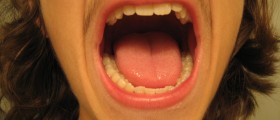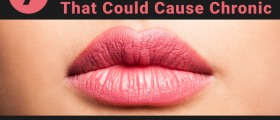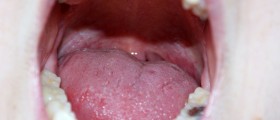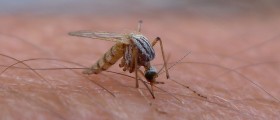What Are Tongue Diseases?
When your tongue is healthy, you probably pay very little attention to it and may never even consider that your tongue, too, can be impacted by diseases and infections. It is, however, a good idea to keep an eye on the condition of your tongue, because catching a problem early helps you access treatment. In the following text, we list some of the most common tongue diseases. Because there are so many, this is not an exhaustive list.
There many tongue diseases can be caused by a variety of factors that include bad dental hygiene, genetic conditions, or chewing tobacco. The problem may expand to the mouth, lips, palate and other regions if left untreated. The most commonly experienced problems associated with tongue diseases are discoloration, soreness, pain, redness and swelling.

A List of Tongue Diseases
White spots on the mucus membrane located in the mouth suggests a problem called leukoplakia. This problem may also affect the gums, and this condition is typically developed due to chewing tobacco and smoking. Leukoplakia is a very benign problem in itself, but if it is not treated, it can lead to cancer.
The next tongue disease is oral candidiasis. Candida albicans is the fungus that causes this condition. In some cases it may be created due the candida tropicalis or candida glabrata, but this rarely happens. This infection may be found on other areas of the body. Oral candidiasis is an infection created on the mucus membrane of the mouth. When the problem is present, a lot of discomfort is experienced. The problem creates deposits, usually cream colored or thick white, on the tongue's surface. These will bleed if you try to remove them. Also, the tongue may be a bit red in color due to irritation. In most of the cases, anti-fungal drugs used as mouthwash will eliminate the problem, but in some cases, systemic medications are required.
The disease called keratosis pharynges is a common problem when keratin grows on the pharynx. Keratin is the protein from which nails or hair are made, so it is clear why you would not want this in your oral cavity. The problems experienced during this disease are swallowing problems and back throat pain. Unfortunately, the cure has not yet been discovered.
Glossitis is a tongue inflammation and it is accompanied by smoothing of the tongue (meaning the "hairs" that you normally see on the tongue start to disappear), discoloration and swelling. This disease can develop due to a genetic predisposition, but also malnutrition, an allergic reaction, a deficiency of vitamin B or iron, tongue piercing, mechanical irritants, poor hydration, bacterial infection and viral infection. The treatment involves elimination of the inflammation. With drugs such as corticosteroids, the swelling and redness may be decreased very quickly.
- Vitamin levels can be obtained if primary deficiency is suspected or in endemic/high-risk areas.
- Rheumatologic studies (rheumatoid factor, anti-ro, anti-la, erythrocyte sedimentation rate, c-reactive protein, others) may be indicated if autoimmune conditions such as scleroderma are suspected.
- Complete blood count and HIV testing are necessary if immunosuppression is suspected or in the setting of opportunistic infections.
- Endocrine studies such as hemoglobin A1c and thyroid function tests may be helpful if diabetes or thyroid disease is suspected.
- Routine imaging is not required.
- Suspected or known malignancy should receive imaging with computed tomography of the neck with IV contrast.
The incomplete development of the tongue is associated with hypoglossia. This rare disease can occur along with other problems or on its own, and one of the most commonly accompanying problems is oromandibular limb hypogenesis syndrome. This problem caused due to a genetic abnormality. The problem must be diagnosed, and for this, blood tests and a thorough examination must be conducted. They will help in determining the nutrients lacking in the body, but the elimination of the problem may not last long.
Practicing good oral hygiene, eating well, and not smoking or using tobacco are some of the best ways to prevent tongue diseases.







_f_280x120.jpg)








Your thoughts on this
Loading...